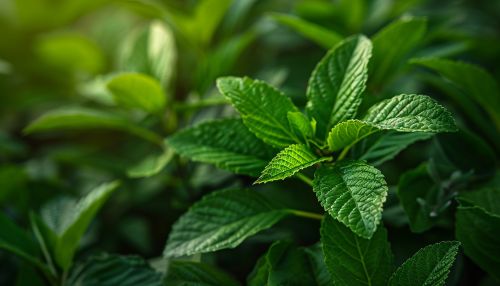Phytochemical synthesis
Introduction
Phytochemical synthesis refers to the process by which plants produce phytochemicals, a broad range of biologically active compounds. These compounds play crucial roles in plant survival and reproduction, and they also have significant impacts on human health and nutrition when consumed. This article delves into the complex world of phytochemical synthesis, exploring the mechanisms behind this process, the diversity of phytochemicals produced, and the factors influencing their synthesis.


Phytochemical Diversity
Plants synthesize a vast array of phytochemicals, each with unique structures and functions. These include alkaloids, flavonoids, terpenoids, phenolic compounds, and many others. The diversity of these compounds is a testament to the evolutionary adaptability of plants and their ability to respond to a wide range of environmental challenges.
Mechanisms of Phytochemical Synthesis
Phytochemical synthesis occurs within plant cells, primarily in specialized organelles such as chloroplasts and endoplasmic reticulum. The process involves multiple enzymatic reactions, each catalyzed by a specific enzyme. These reactions often involve the transfer of functional groups, such as methyl, acetyl, or glycosyl groups, from one molecule to another.
Alkaloid Synthesis
Alkaloids, a class of nitrogen-containing phytochemicals, are synthesized through a series of condensation and cyclization reactions. The initial steps often involve the condensation of amino acids or their derivatives, followed by cyclization to form a heterocyclic ring structure. The resulting alkaloids exhibit a wide range of biological activities, including antimicrobial, antiviral, and insecticidal properties.
Flavonoid Synthesis
Flavonoids are synthesized through the phenylpropanoid pathway, which begins with the amino acid phenylalanine. This pathway involves several key enzymes, including phenylalanine ammonia-lyase (PAL), chalcone synthase (CHS), and flavonoid 3'-hydroxylase (F3'H). These enzymes catalyze a series of reactions leading to the formation of various flavonoid subclasses, including flavones, flavonols, and anthocyanins.
Terpenoid Synthesis
Terpenoids, also known as isoprenoids, are synthesized through the mevalonate pathway or the non-mevalonate pathway, also known as the 2-C-methyl-D-erythritol 4-phosphate (MEP) pathway. These pathways involve a series of condensation reactions leading to the formation of isoprene units, which are then assembled into various terpenoid structures.
Factors Influencing Phytochemical Synthesis
Several factors influence the synthesis of phytochemicals in plants, including environmental conditions, plant age and health, and genetic factors.
Environmental Conditions
Environmental conditions such as light, temperature, and soil nutrients can significantly influence phytochemical synthesis. For example, exposure to high light intensity can increase the synthesis of flavonoids, which help protect the plant against UV radiation. Similarly, nutrient availability can influence the synthesis of alkaloids and other nitrogen-containing compounds.
Plant Age and Health
The age and health of a plant can also influence phytochemical synthesis. Young plants often produce different phytochemicals compared to mature plants, reflecting their different metabolic needs. Similarly, plants under stress, whether from disease, pests, or environmental factors, often increase the synthesis of certain phytochemicals as part of their defense response.
Genetic Factors
Genetic factors play a crucial role in phytochemical synthesis, as the presence and activity of specific enzymes determine the types and quantities of phytochemicals produced. Genetic variations, whether natural or induced through breeding or genetic engineering, can significantly influence phytochemical synthesis.
Conclusion
Phytochemical synthesis is a complex and fascinating process, with significant implications for both plant biology and human health. Understanding this process can help us better appreciate the remarkable chemical diversity of plants and the myriad ways in which they interact with their environment and with us.
